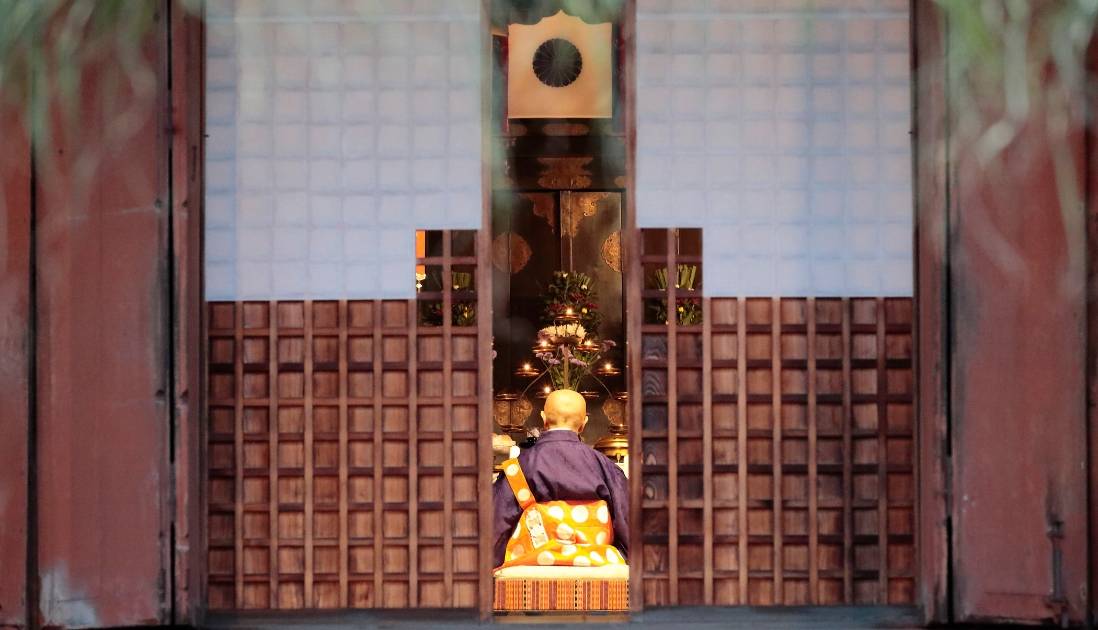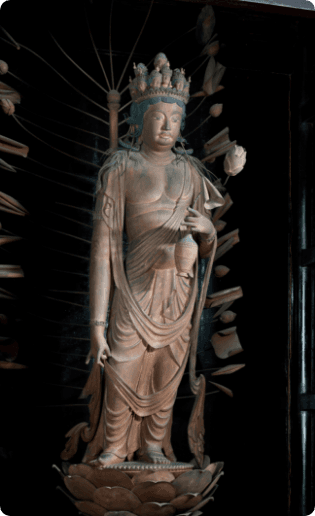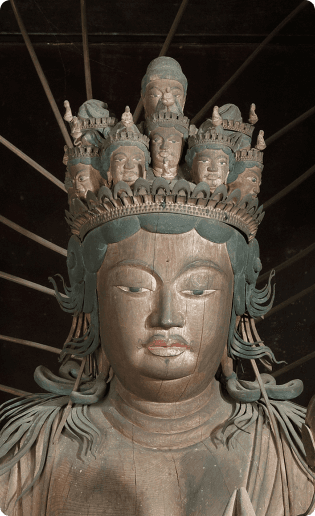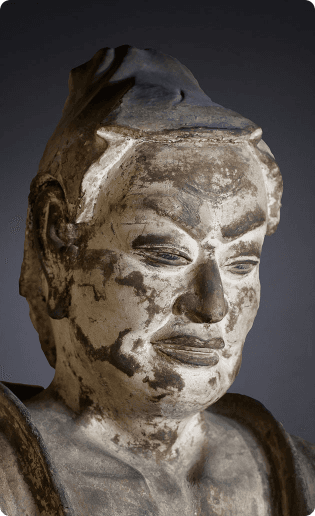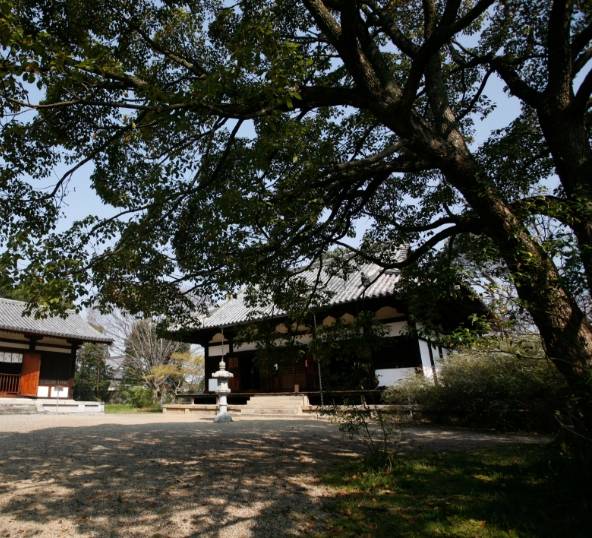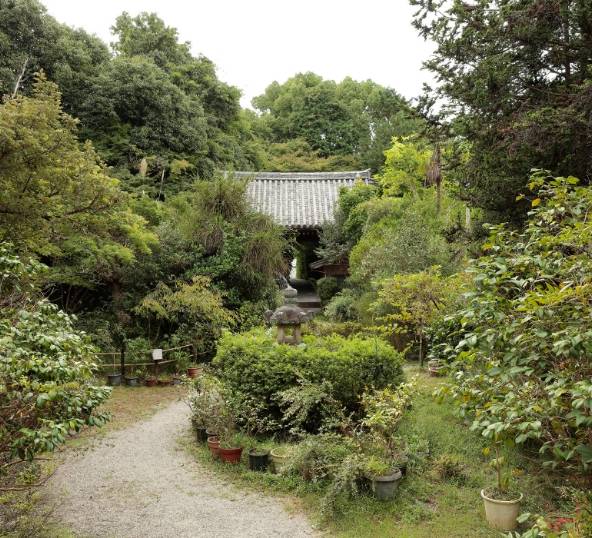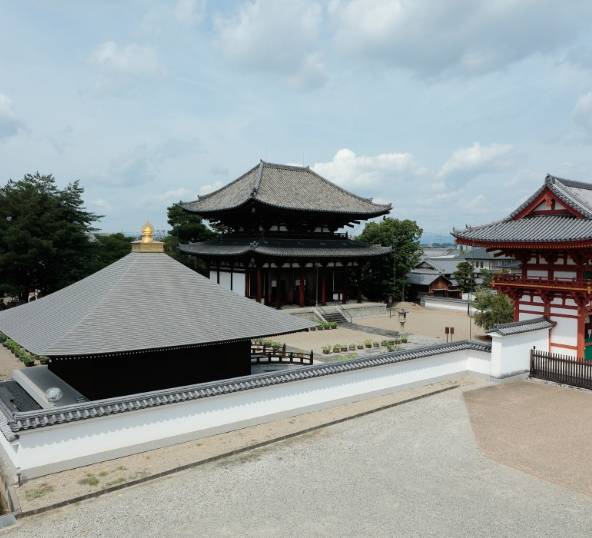Hokkeji
法華寺
朝霧の たなびく田居に 鳴く雁を 留め得むかも わが屋戸の萩
Empress Komyo (701–760), a key figure in the spread of Buddhism in Japan, established the Hokkeji Imperial Convent on the site of the former mansion of her father, the powerful courtier Fujiwara no Fuhito (659–720). And after the empress’s husband, Emperor Shomu (701–756), designated Todaiji Temple as the head of a state temple complex, Empress Komyo designated Hokkeji as the head of a national system of convents. From the thirteenth to sixteenth centuries, the daughters of imperial and noble families entered Hokkeji as Buddhist nuns.
The name Hokkeji can be roughly translated as the Temple of the Flower of the Law. Empress Komyo encouraged women in the convent to practice ikebana, or flower arrangement, and the Hokkeji Goryu school of ikebana continues to this day.
A deeply devout woman, the empress believed her duty was not only to care for the women in the convent, but also the less fortunate. She established an infirmary, as well as a residence for orphans and the disabled. It is said that she washed the dirt off a thousand people afflicted with illness in the Karafuro bathhouse, which was rebuilt in 1766 and still stands on the temple grounds today.
The other highlights of Hokkeji include the statues of Eleven-Headed Kannon and Yuimakoji, both National Treasures; the Hokkeji Garden, a National Historic Site famed for its Japanese irises (Iris laevigata); and the Main Hall, Main Gate, and Shoro bell tower, which date to the early seventeenth century.
Hokkeji Garden
The stones and plants in this beautiful garden were brought here in the seventeenth century from the Sento Imperial Palace, once part of the Kyoto residence for retired emperors. The garden is celebrated for its many Japanese irises (Iris laevigata), which bloom in an explosion of violet petals in May, to the delight of visitors.
National Treasures and Important Cultural Properties
Hign
Within the Temple Precincts
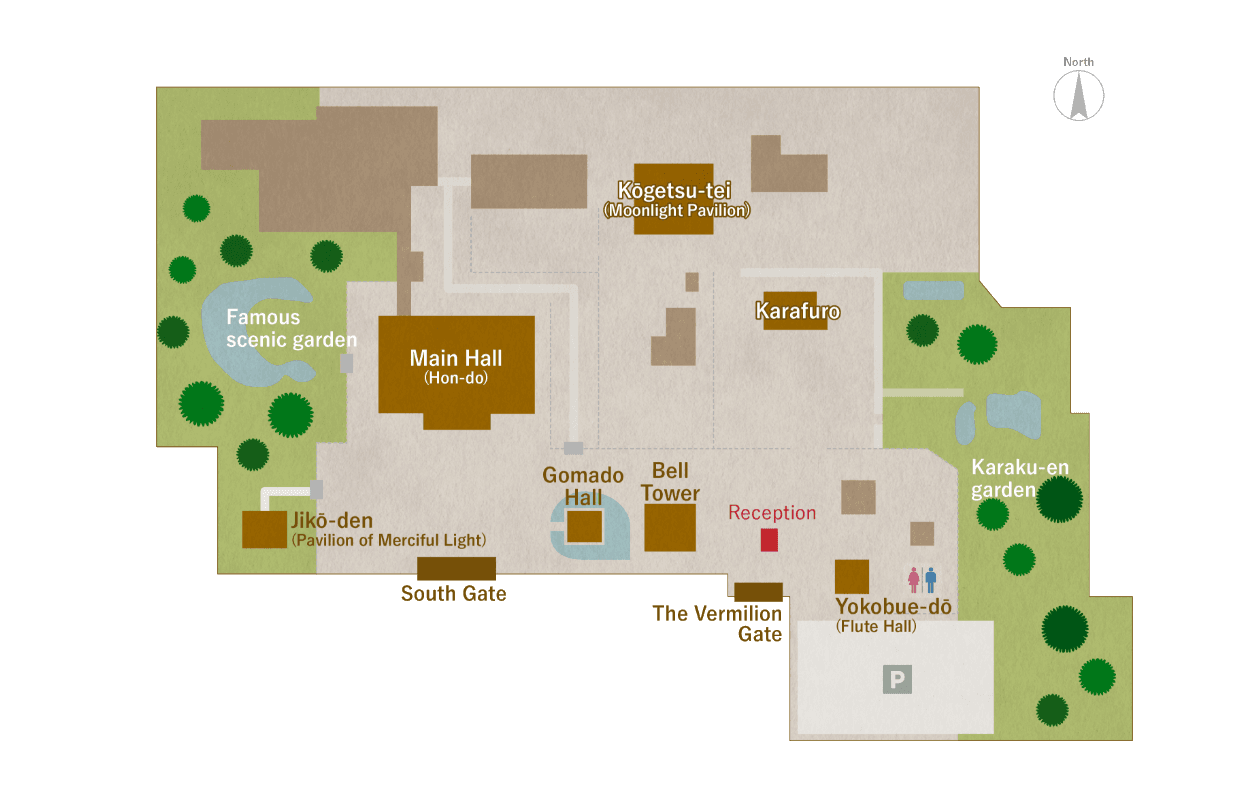
Scroll

Keywords to Help Understanding of the Temple
Keywords
Omamori-inu
Empress Kōmyō, who was actively involved in the relief of the common people, is said to have started making these amulets herself as a form of protection. Since then, the tradition has been passed down through the generations, and even today, Buddhist nuns handcraft each amulet using the ashes from a goma (fire ritual) offering. Due to the great effort involved, these amulets are rare and can only be obtained through prior reservation.

Basic Information
Hokkeji
- Official Website
- https://hokkejimonzeki.or.jp/en/
- Hours
- 9:00 - 16:30 (Last admission: 16:00)
- Entrance fee
-
Adults: 700 yen
Elementary & Junior High-School Students: 350 yen
Special Openings:
March 1–14, March 20–31, April 8–June 4:Adults: 800 yen
Elementary & Junior High-School Students: 400 yen
April 1–7, June 5–10, October 25–November 10:
Adults: 1000 yen
Elementary & Junior High-School Students: 500 yen
Note: The admission fee may change depending on the schedule of the Shōsō-in Exhibition.
※Kagaku-en (Flower Garden) Only Admission: 300 yen.
However, during special openings, you cannot visit only the Flower Garden.
※National Historic Site & Scenic Garden Openings (April 1–June 10): 500 yen
※For information on various discounts, please check the official website.
- Access
- About a 3-minute walk from the Nara Kōtsu Bus 'Hokkiji' bus stop.
- Tel
- 0742-33-2261
Other temples in the Saki district
Temple
The original text and modern translation of the Man'yōshū on this site are quoted from Kodansha Bunko's Man'yōshū Complete Translation with Notes and Original Text (by Susumu Nakanishi).

